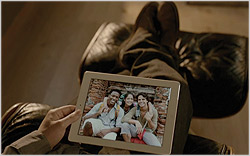Commentary
Moments, Moods and Modes: 'Tablet' Is Not 'Mobile'
- by Steve Smith , Staff Writer @popeyesm, June 26, 2012
 The headline has become a quick cliché in the mobile media and marketing business. I hear it from brand marketers and agencies all the time. And
in fact, we heard it from the first OMMA Tablet Revolution show we hosted in New York a year ago. Tablets and smartphones really have fundamentally different use cases, contexts, and modes. And yet
most of us continue to lump the two together in reporting and industry metrics.
The headline has become a quick cliché in the mobile media and marketing business. I hear it from brand marketers and agencies all the time. And
in fact, we heard it from the first OMMA Tablet Revolution show we hosted in New York a year ago. Tablets and smartphones really have fundamentally different use cases, contexts, and modes. And yet
most of us continue to lump the two together in reporting and industry metrics.
Maybe we are being a bit intellectually lazy. Or perhaps we just don’t want to admit into our ken just how complex and fragmented even the mobile world just became.
Interactive marketing agency Rosetta is here to remind us of the cold, hard truth. In support of this week’s Forrester Customer Experience Forum, the company released some of its own consumer research about devices and how marketers need to customize experiences according to screen size and mode of use. For instance, in addition to sheer mobility, the difference between tablets and phones may be the focus as much as anything. Eighty-one percent of tablet owners surveyed said they use the device in the living room, usually with the TV on. While we all know how much this impacts broadcasters and invites second-screen experiences, it is also worth mentioning that the dual-screen effect can be as much of a distraction from the tablet screen as the tablet can be from the TV.
For a host of reasons, Rosetta finds that tablet, mobile and desktop campaigns -- even on a common denominator like search -- actually perform differently. Mobile and tablet searchers seem to be more “motivated,” Rosetta says. Although volume of activity is lower, searches on tablet keywords perform better, and so unique strategies and different optimizations could pay off.
Ad copy that acknowledges the tablet environment and landing pages that are optimized for the screen size and interface performs better, they find. Tablet advertising should be dayparted to intercept the user when he or she is most likely to be using the device. Rosetta argues that mobile marketing needs to calibrate the campaign so that the right device is addressing the consumer at the right moment in their “journey” to purchase.
The prospect of having to account for device and time of day seems like a further costly fragmentation of budgets and time across even more platforms. But ultimately devices could introduce new efficiencies. As we come to understand the different user “modes” and how they correspond to device use and contexts, then planners can target only the “moments” when impact or conversion are optimal.
The post-PC environment does not require brands to “be everywhere” or even “be everywhere the consumer is.” It means that marketers can become smarter about choosing their user moments, moods and modes.




So is there a mobile device divide we didn’t know existed?
After reading Steve Smith’s article, I’d conclude there is. Maybe smartphones and tablets aren’t siblings after all, but just relatives. Consider Apple and its iPhone and iPad. Both devices run iOS operating systems and seem to have the same “parents.” But perhaps they’re more like first cousins.
Smith frets (though ultimately accepts) the cost of further splicing media type for specific devices. But it's important to remember that a similar granular approach is occurring in all digital media and in all industries, from retailers to travel and hospitality and beyond.
Retailers, for instance, use a mix of traditional and digital metrics gathering to paint the most accurate shopper picture yet, isolating, when and where shoppers want to be engaged and their likely purchases. What’s more, they’ve learned that approach from cable TV. Think about The Weather Channel and its segmented programming, designed to reach different viewers at different times.
So as we begin to recognize the array of differences between smartphone and tablets, we should remember not to always write about them in single articles or refer to them as “companion devices.”